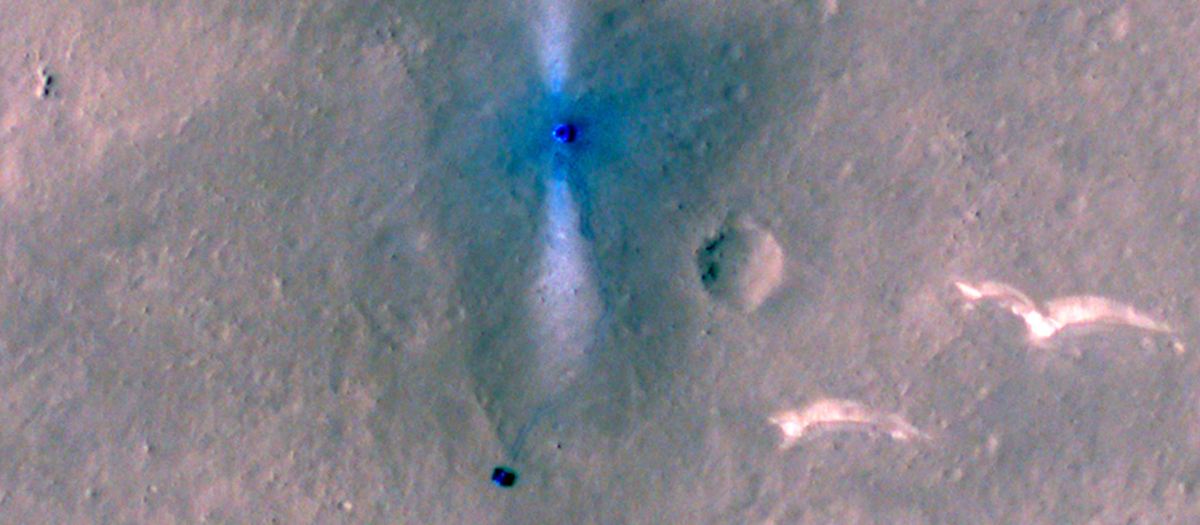HELSINKI — China is on course to launch its Tianwen-3 Mars sample return mission in 2028, according to the mission’s lead.
Liu Jizhong, chief designer of Tianwen-3, provided an update on the mission at the second international conference on deep space exploration (Tiandu) in Tunxi, Anhui province, Sept. 5.
Tianwen-3 will consist of two launches from Earth. Two Long March 5 rocket launches will carry a lander and ascent vehicle and an orbiter and return module respectively. Entry, descent and landing will build on technology used for the Tianwen-1 rover landing.
The mission may also include a helicopter and a six-legged crawling robot for collecting samples away from the landing site.
Earlier this year, Sun Zezhou, a senior engineer at the China Academy of Space Technology (CAST), told state media that work on Tianwen-3 was progressing “relatively smoothly” and will launch around 2030.
The timeline for the mission has flitted between launch years of 2028 and 2030 over the years. Optimal launch windows for Mars open for a few weeks every 26 months. Mission updates provide little information to progress on hardware, making timelines hard to assess.
NASA is working on its own, more complex Mars sample return mission. However the program is being reassessed, following projected cost overruns. Studies are being conducted to identify concepts that can deliver samples faster and cheaper than current plans.
Search for life, planetary protectionLiu stated that the search for evidence of life is the Tianwen-3’s top scientific goal, according to state media China Central Television (CCTV).
Earlier reporting notes that potential landing areas will be selected based partly on astrobiological relevance. This includes environments potentially suitable for the emergence of life and its preservation, such as sedimentary or hydrothermal systems, evidence of past aqueous activity and geological diversity.
Researchers have identified three preselected landing zones for Tianwen-3. These are Amazonis Planitia, Utopia Planitia—the area within which the Zhurong Tianwen-1 rover landed—and Chryse Planitia. These were selected based on science potential, engineering constraints—such as low altitude which allows greater opportunity to slow descent using the atmosphere before landing—and safety based on local atmospheric conditions.
Mission challenges include sampling, taking off from the surface of Mars, orbit rendezvous, and planetary protection.
Regarding the latter aspect, the mission will strictly abide by international agreements on planetary protection, according to CCTV. This relates to taking efforts to avoid contamination of either Mars or Earth on the return leg.
The Outer Space Treaty is the primary legal instrument that binds countries regarding planetary protection. The Committee on Space Research (COSPAR), a global body associated with the International Council for Science, provides detailed guidelines on planetary protection.
International cooperation, Mars research stationThe Tianwen-3 mission will also include international cooperation, according to Xinhua. This will be in the areas of payloads, samples and data sharing, and research planning for the future.
China states that it plans to work with scientists worldwide to cooperatively study and share Martian samples and data. The China National Space Administration (CNSA) has made samples from its Chang’e-5 lunar nearside sample return mission available to research applications for international researchers. The same is expected for the recently-completed Chang’e-6 lunar farside mission.
Further ahead, Tianwen-3 will include partnering with countries and research institutions to define the objectives and tasks of a future Mars research station. This will include analyzing requirements, conducting conceptual studies, design implementation plans, and tackling key technological challenges.
